
— Tim
Eighty Years Ago
Featuring Errol and a host of Hollywood stars in the 7 minute short For Auld Lang Syne,
James Cagney introduced himself and proceeded to identify the attending guests as they arrived at this benefit function, most of whom stepped up to a microphone to be interviewed on the radio by George Jessel, although the only voice heard during the “arrival” sequence is that of Cagney’s.
Cagney introduced Rudy Vallee as the M.C., and Valle presented the Benny Goodman Orchestra in a swing number and then introduced Dick Powell who sang “Ride, Tenderfoot, Ride” from 1938’s “Cowboy from Brooklyn.” Donald Crisp comes on and introduces himself as the co-M.C. and then he introduces Paul Muni, who makes the appeal to the theatre audience to make donations to the Will Rogers Memorial Hospital.
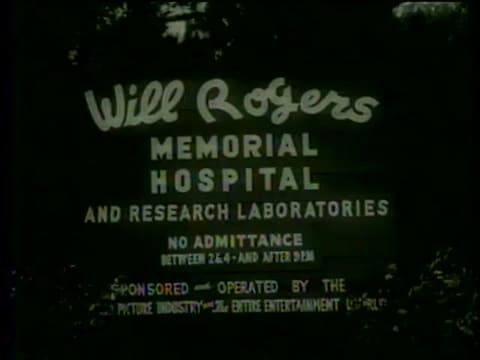
In order of appearance on-screen was: Cagney, Hugh Herbert, Glenda Farrell, George Jessel, Humphrey Bogart, John Barrymore, Bette Davis, Harmon Nelson, Hal Wallis, Louise Fazenda, Basil Rathbone, Marie Wilson, Freddie Bartholomew, Paul Muni, Errol Flynn, Lili Damita, Benny Goodman, Lionel Hampton, Gene Krupa, Dick Powell, Donald Crisp and Muni again.
…
To Fans of Flynn Around the Globe:

— Tim
PHOTO FROM “NOVEMBER 23, 1946”
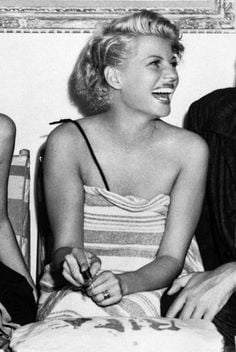

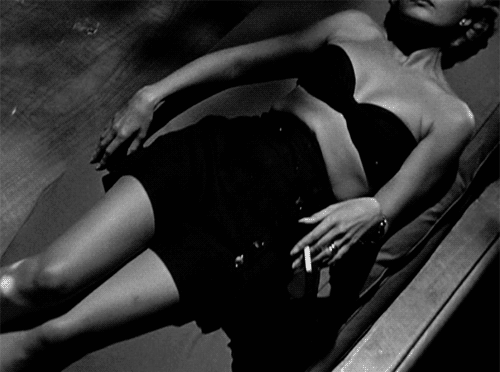
P.S. Rita turned 100 this year! Thank you, Rita, for all the beauty, talent, joy and love you brought the world!
— Tim
In Celebration of Thanksgiving and the Native American Annual Harvest
COMFORTING SHADOWS IN CENTRAL PARK, 1941
Indians Adopt Errol Flynn. New York: “Movie actor Errol Flynn has to undergo a ‘tomahawking’ during the ceremony marking his adoption as a member of the United Sioux Tribe at the Indian’s Annual Harvest Festival in Central Park (Hechsher Playground) New York November 24. Named ‘Comforting Shadows’, Flynn is one of two notables ever to be given this particular adoption. It made him blood brother of Mayor Fiorello LaGuardia of New York City.”
ERROL GETS SIOUXED AND LOSES HIS SHOES

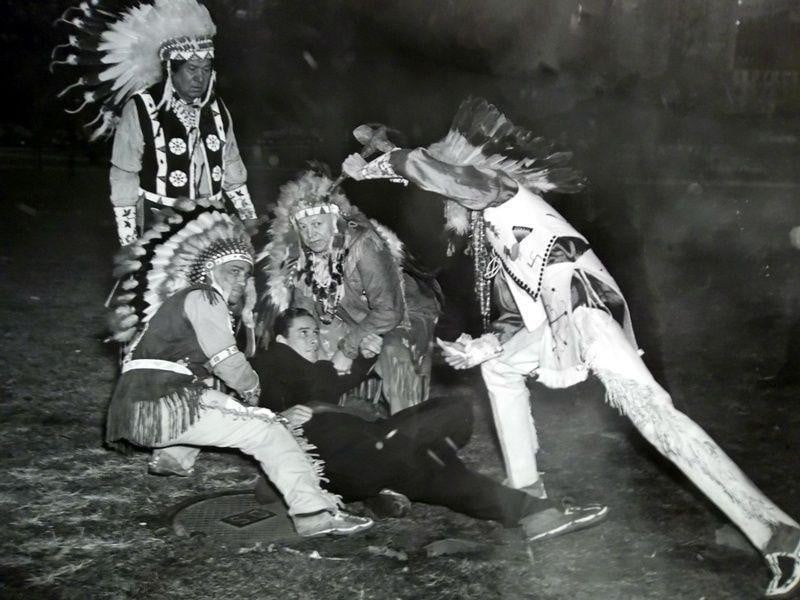
— Tim
SEVENTY-FIVE YEARS AGO THIS WEEK
From Under the Sea, to the Top of the World
— Tim
35mm THE ADVENTURES OF ROBIN HOOD (1938 version) at the Vista, Los Feliz
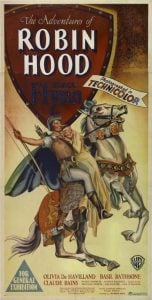
DATE AND TIME
Sat, November 17, 2018
10:30 AM – 1:00 PM PST
Vista Theatre
4473 Sunset Drive
Los Angeles, CA 90027
SATURDAY, NOVEMBER 17, 2018 10:30am: THE ADVENTURES OF ROBIN HOOD (1938, dir by Michael Curtis, 35mm, Warner Brothers, USA)
Yeah, that’s right: THE ADVENTURES OF ROBIN HOOD. No one has ever
come close to the swash-buckling joy and pure cinematic ecstasy of
Michael Curtiz’s 1938 masterpiece starring Errol Flynn, Olivia De Havilland, Claude Rains, and Basil Rathbone.
If you’ve never seen this version of the movie, you’ve never seen ROBIN HOOD. The movie quite possibly served as a single movie film school for much of the visual language of Steven Spielberg. Sword fights are played almost exclusively in shadow against walls. Action sequences are filled with bursts of expertly choreographed movement to and from the camera. But the whole movie holds together because of the glue of the great charismatic performances from all its leads.
Widely celebrated, director Michael Curtiz had a ridiculously talented grasp of cinematic language, blocking, action, style. If one wants to learn how to make a rip-roaring adventure movie, one studies Michael Curtiz. And this programmer suspects that Steven Spielberg spent a lot of time studying Curtiz before making such swashbucklers as JAWS and RAIDERS OF THE LOST ARK.
Join us for 102 minutes of pure adventurous joy as lovable rogue Robin Hood (Errol Flynn) romances the beautiful and clever Maid Marion (the luminous Olivia De Havilland), fights the corruption of the selfish Prince Guy (the ever reliable scoundrel, Claude Rains) and crosses swords with the nefarious and murderous Sir Guy (Flynn’s regular foil, Basil Rathbone).
Filled with classic sequences of irrepressible energy and verve, THE ADVENTURES OF ROBIN HOOD is one of the all-time great adventure movies.
— Tim
No, not that Supreme Court Justice. The justice being sought from the Supreme Court in the just-filed ODH v. FX.
pagesix-com.cdn.ampproject.org…
P.S. I’m not sure all the justices will be able to keep up with our Lady O.
— Tim
Flynn and Custer, a perfect match – brilliant, discipline-proof, dashing, and destined for greatness.
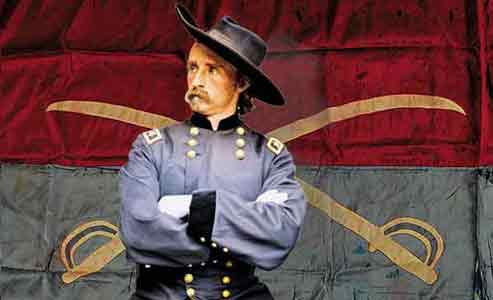
THEY DIED WITH THEIR BOOTS ON
(Benton Harbor News-Palladium, December 29, 1941.)
Monroe- The premier of the motion picture “They Died With Their Boots On” depicting the career of General George Armstrong Custer, was shown here Sunday. Seven members of the Custer family residing here attended the performance. Brigadier-General Custer, slain in the Battle of the Little Big Horn, attended school and married here.
ERROL FLYNN PLAYS GEORGE CUSTER
(Benton Harbor News-Palladium, January 10, 1942)
Custer’s last stand is an epic of the old west, but the rest of Custer’s life is a Michigan story. As shown in They Died With Their Boots On, the new Errol Flynn, Olivia de Havilland film opening Sunday at the Liberty, George Armstrong Custer’s adventures were intimately concerned with his native state.
He made a name for himself in the Civil War at the Battle of Gettysburg depicted in the film by leading a series of charges by gallant Michigan regiments. Thrown back time and time again, they kept up the fight under his inspirational leadership and finally turned the tide of battle.
After the Civil War ended, Custer like so many brilliant young officers of the Union Army, was retired. A peacetime Army had no use for the vast number of officers developed by the war. Young General Custer settled down with his wife in their native Monroe, Michigan, to live a life of peace.
It was from the same Monroe that Custer had gone before the Civil War to become the most discipline-proof cadet that West Point had seen in years.
According to the film, the most famous song of Custer’s Seventh Regiment, the Gary Owen, was taught to the General in Monroe by an English soldier who was a Union veteran. When the regiment rode forth in battle on the Little Big Horn, the song Custer learned in Monroe, sped them on their way.
George Custer was only 37 when he died. Life in Monroe had bored him. In order to get back into active Army service, he accepted colonel’s rank. He was sent to the most dangerous territory in America, Sioux Country. The Indians called him “Long Hair.” The tribute they paid him in his last stand shows the esteem in which he was held, even by his enemies. Every man killed in the battle was scalped – except Custer.
GENERAL CUSTER AFYER 45 YEARS
(Detroit Free Press, June 27, 1921)
It has been remarked that George Armstrong Custer’s chief contribution to the history of his country was his personality. Such a statement looks like a truism, but in his case it was more peculiarly true than in most. An operose, impetuous spirit, his tepidity, his dash, his verve, has passed into legend while there are still people living in these states who thrill to the memory of the day when Custer fell, who remember the clash of opinion that arose before his gallant blood had cooled.
The forty-five years that have passed since June 25, 1876, have not settled the argument. Was Custer’s death with his three brothers, his nephew, and all of the old fighting Seventh Michigan Cavalry , due to mis-wisdom, an untutored impetuosity, or were the trap and the barbarous slaying inevitable? How much of the mistake can be placed on the two commanders under him, Benteen and Reno, and was the natural indignation of the country justified? The exact facts are obscure, for we are unwilling to accept the only evidence which came from an Indian.
The significant thing now is that Custer’s story is not allowed to die – it is too romantic, too fraught with the perilous spirit of the frontier days which have rapidly dimmed and receded. The story has been woven into pageants, it has been vividly acted before the camera in its own historic setting. Today, out in Hardin, Montana, it is being commemorated again, re-enacted with Indians, some of whom are from the fierce tribe of Sitting Bull. Tamed now and submissive, forgetting the hot rage of the warrior, they are acting for the pleasure of the conqueror and perhaps for the lost glory of their tribe, scenes which were part of the destructive tide that swept them from their last entrenchments in the badlands of the prairie.
What history will do with Custer a hundred years, hence it is impossible to judge; it is probably that no matter what the historian of the future makes of his case he will be handed along in the legends which gave the thrill to cold facts as the perfect cavalry type, the temerarious General of Horse. The nation will remember him as Edward Clark Potter has pictured him when in that significant moment during a lull in the Battle of the Little Big Horn, he spurred forward from the line, and hat in hand, his golden curls flowing from a head thrown back, he stood for a moment surveying enemy lines. His striking uniform, his youth, his daring, combined to make him a glorious, a charmed figure.
The nation will remember him too, however much they may doubt his judgment, as the general who immensely brave, immensely daring, overpowered twenty to one, stayed with his men and died fighting in place. They will honor him as the Sioux honored him, Sitting Bull’s warriors who killed him but held his body inviolate because he was a warrior of whose prowess they stood in awe.
CUSTER’S LAST GUIDON
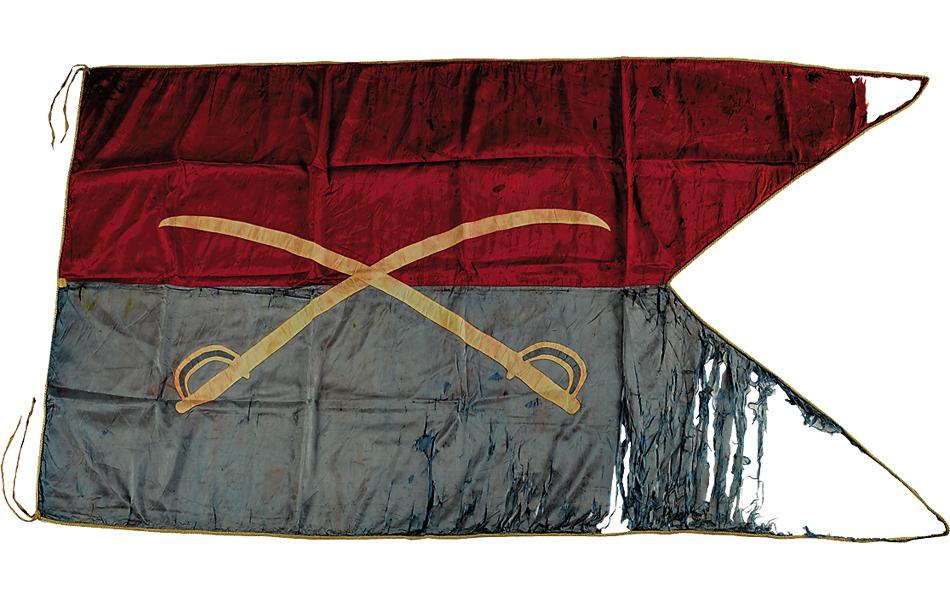
— Tim